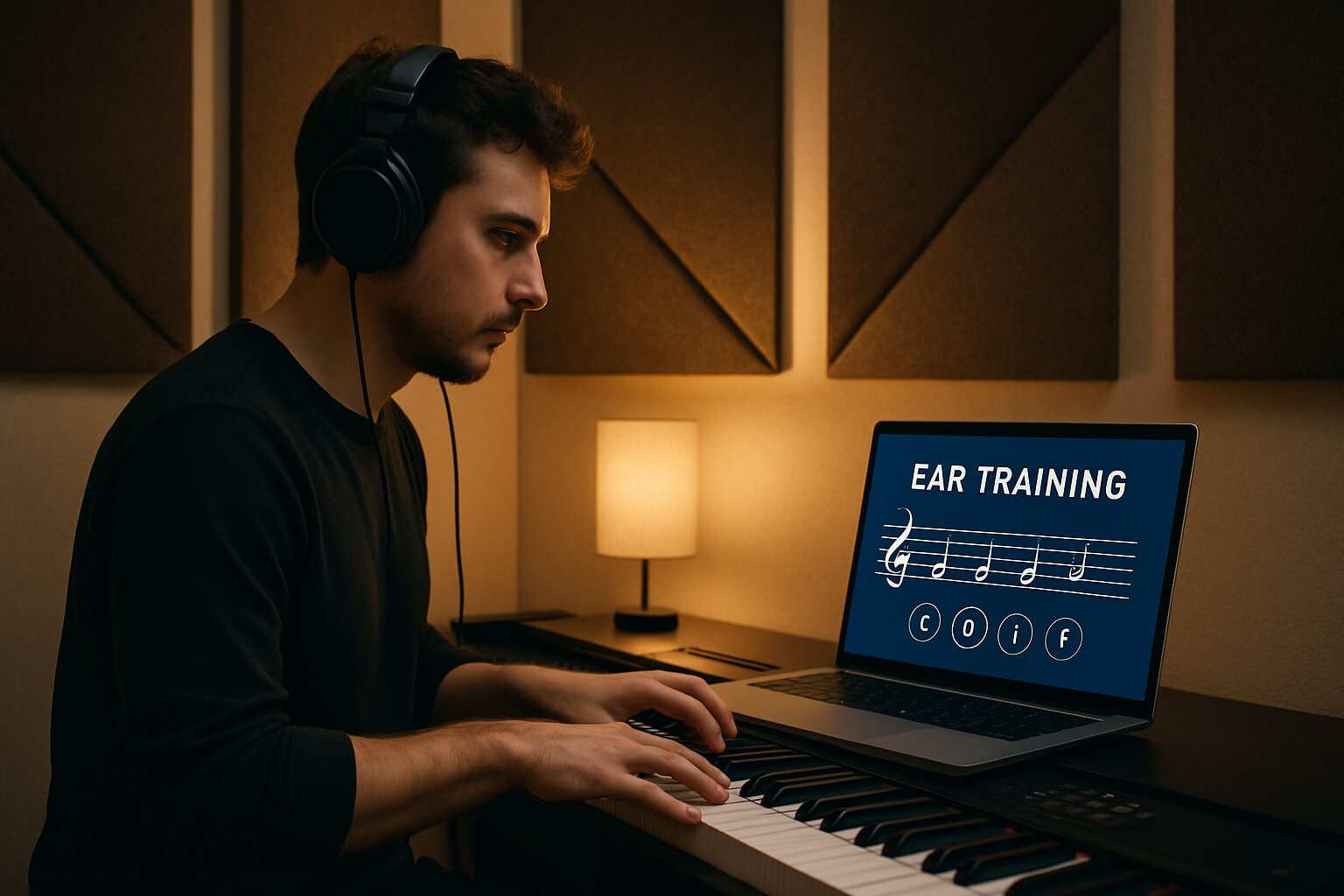If you’re serious about becoming a better musician, there’s one skill that quietly powers every great performance: ear training.
Whether you want to improvise freely, transcribe solos, sing harmonies, or build emotional chord progressions from scratch, it’s your ears, not just your fingers, that make it possible.
This guide dives deep into the art and science of ear training—what it is, why it’s vital, and how to train your ears to recognize intervals, chords, melodies, and more with precision.
What Is Ear Training?
Ear training is the process of improving your ability to recognize and reproduce musical elements by ear—without looking at sheet music, tabs, or relying on visual cues.
At its core, this practice strengthens the connection between what you hear and how you respond musically. It's not just about guessing notes—it's about deeply understanding the sound relationships behind music.
You’ll train to hear and identify:
- Intervals – the pitch distance between two notes (e.g., major third, perfect fifth)
- Chords – like major, minor, diminished, or dominant 7th
- Melodies – simple and complex note patterns across scales
- Scales & Modes – such as major, minor, Dorian, Lydian, etc.
- Chord Progressions – like I-IV-V or ii-V-I, commonly used in all genres
- Rhythms – to lock into timing, groove, and syncopation
Want to practice with real-world music files? Download Our Curated Pack of 100 Royalty-Free Tracks to sharpen your ear on professionally mixed audio.
Why Is Ear Training Important?
Every top-tier musician has trained their ears. From classical pianists to jazz soloists to bedroom producers, ear training is what allows musicians to:
- Play By Ear: Hear a song once and replay it instantly on your instrument.
- Transcribe Solos & Melodies: Write out music just by listening—no sheet music needed.
- Improvise Creatively: Know which notes and chords "fit" during live or studio sessions.
- Enhance Songwriting: Build chord progressions and melodic hooks confidently and naturally.
- Improve Tuning & Intonation: Sing or play with pinpoint pitch control.
This skill doesn’t just make you faster—it makes you freer. You’ll stop relying on guesswork and start trusting your inner musical instincts.
Core Ear Training Exercises (With Explanations)
1. Interval Recognition
- Start by training your ear to recognize intervals—the distance between two notes, either played together (harmonically) or separately (melodically).
- Begin with perfect intervals (unison, 4th, 5th, octave), then move into major/minor 2nds, 3rds, 6ths, 7ths.
- Use popular reference songs to remember them:
- Perfect 4th: “Here Comes the Bride”
- Major 3rd: “When the Saints Go Marching In”
- Listen, sing, and play intervals on your instrument for multi-sensory learning.
- Try digital tools like:
- Functional Ear Trainer (free, adaptive)
- Tenuto (visual + aural quizzes)
- EarMaster (all-in-one training)
2. Chord Identification
- Learn to recognize chord qualities by ear—start simple, then go complex:
- Start with Triads: Major, minor, diminished, augmented
- Move to 7th Chords: Dominant 7, Major 7, Minor 7, Half-Diminished
- Later Add: Suspended, extended chords (9ths, 11ths, 13ths)
- How to practice:
- Play or listen to a chord, then sing each note (root–third–fifth).
- Try singing the chord quality before identifying the root—this strengthens intuition.
3. Melodic Dictation
- This is about hearing a melody and reproducing it—either by singing, playing, or writing it out.
- Start simple: Use short 3–5 note melodies.
- Listen & Repeat: Hum or play the melody back from memory.
- Write What You Hear: Notate it using your instrument or software.
- Melodic dictation is the foundation of playing by ear, writing hooks, and composing on instinct.
- Use your DAW to:
- Record what you think you heard.
- Compare your answer to the original and adjust.
4. Sing Scales and Intervals
- Singing is one of the most effective ways to internalize pitch.
- Sing Major, Minor, and Chromatic Scales slowly and clearly.
- Use Solfege (Do–Re–Mi) or scale degrees (1–2–3–4) for structure.
- Practice singing interval jumps (e.g., from Do to Sol = perfect fifth).
- This not only helps with hearing relationships between notes—it improves your intonation, which is essential for vocalists, string players, and wind instrument musicians.
Bonus Tools & Ear Training Resources
How to Practice Ear Training Effectively
- The key to success is deliberate consistency. Here’s how to integrate ear training into your routine without burnout:
- Daily Practice (10–15 minutes): Short, focused sessions yield better long-term results than occasional cramming.
- Integrate with Instrument Time: Play what you hear, sing what you play.
- Use Playlists of Chords & Intervals: Train passively while walking, commuting, or relaxing.
- Practice in Real Contexts: Try identifying the chords and melodies in your favorite songs.
- Track Your Progress: Use apps that show skill levels, accuracy, and progression.
Final Thoughts
Ear training is more than a skill—it’s a musical superpower. It turns passive listening into active understanding. It transforms your creative ideas into sounds you can replicate, remix, or write down in seconds.
Whether you're improvising jazz solos, scoring for film, or producing beats in your DAW, your ears are the most valuable production tool you own.
Start small. Stay consistent. And over time, you’ll hear music with an entirely new sense of clarity and control.
Ready to train like the pros? Subscribe to Unlock Weekly Free Music Drops – Used by 10,000+ Creators
